- Understanding Bilbergia Plants
- Appearance
- Flowering
- Requirements
- Popular Species
- Selecting the Right Bilbergia Species
- Light Requirements
- Temperature and Humidity
- Size and Growth Habit
- Flower Color and Shape
- Maintenance Requirements
- Providing Adequate Lighting for Bilbergia Plants
- 1. Indirect Sunlight
- 2. Avoid Excessive Shade
- 3. East or West-Facing Windows
- 4. Supplemental Lighting
- 5. Monitor Light Levels
- Watering and Humidity for Bilbergia Plants
- 1. Watering Frequency
- 2. Watering Method
- 3. Water Quality
- 1. Natural Humidity
- 2. Humidity Tray
- 3. Misting
- Choosing the Right Soil for Bilbergia Plants
- 1. Well-Draining Soil
- 2. Organic Matter
- 3. pH Level
- 4. Fertilizer Compatibility
- 5. Quality vs. Price
- Fertilizing Bilbergia Plants
- Choose the right fertilizer
- Apply the fertilizer correctly
- Water the plants properly
- Monitor the plants’ response
- Consider organic fertilizers
- Pruning and Propagating Bilbergia Plants
- Pruning Bilbergia Plants
- Propagating Bilbergia Plants
- Conclusion
- Common Pests and Diseases Affecting Bilbergia Plants
- Pests
- Diseases
- Q&A:
- How often should I water my Bilbergia plants?
- Can Bilbergia plants tolerate direct sunlight?
- How do I propagate Bilbergia plants?
- What are some common problems that Bilbergia plants can encounter?
- What are some popular species of Bilbergia plants?
- Video: How to Clean Artificial Plant // Easy and Simple Ways to Clean your Artificial Plants
Bilbergia plants are a popular choice for indoor gardening enthusiasts due to their unique appearance and relatively low maintenance requirements. This genus of bromeliads consists of numerous species, each with its own distinctive features and care needs. In this article, we will explore some essential tips for nurturing these captivating plants in the comfort of your own home, as well as highlight a few noteworthy species worth considering for your collection.
When it comes to caring for Bilbergia plants, one of the most important factors to consider is the lighting conditions. These plants thrive in bright, indirect sunlight, so placing them near a north or east-facing window is ideal. However, be cautious of exposing them to direct sunlight, as it can scorch their delicate leaves. If natural sunlight is limited in your space, supplementing with artificial grow lights can be a great alternative.
In addition to lighting, proper watering is crucial for the health and well-being of Bilbergia plants. These bromeliads prefer to be kept moderately moist, but not overly saturated. It is recommended to water them thoroughly, allowing the water to drain out of the pot, and then allowing the top inch of the soil to dry out before watering again. Remember to use room-temperature water and avoid getting the leaves excessively wet, as this can lead to rot or fungal issues.
Did You Know? Bilbergia plants are native to the tropical regions of Central and South America, where they often grow as epiphytes, attaching themselves to trees or rocks. This adaptation allows them to absorb water and nutrients from the air and rain.
Another important aspect of Bilbergia plant care is providing them with the right humidity levels. These bromeliads prefer higher humidity, around 50-70%. If your home has dry air, especially during winter months, misting the leaves with water or using a humidifier can help create a more favorable environment. Placing the plants on a pebble tray filled with water can also increase humidity around them.
Lastly, let’s explore a few notable Bilbergia species that can elevate your indoor plant collection. Bilbergia nutans, also known as Queen’s Tears, is a popular choice with its stunning, pendant-like flowers in shades of pink and purple. Bilbergia pyramidalis, or Lollipop Plant, features vibrant red bracts and a compact growth habit, making it a great choice for smaller spaces. For those seeking an elegant, variegated option, Bilbergia ‘Hallelujah’ offers striking white-striped leaves.
By following these care tips and exploring the wide range of Bilbergia species available, you can create a vibrant and thriving indoor garden that will surely captivate any plant lover. With their unique appearance and relatively low maintenance needs, Bilbergia plants are a fantastic addition to any plant collection.
Understanding Bilbergia Plants
Bilbergia plants are a popular choice for indoor gardening enthusiasts due to their unique foliage and beautiful flowering displays. These plants belong to the Bromeliaceae family, which also includes other well-known houseplants like the pineapple.
Appearance
Bilbergia plants are known for their striking and colorful foliage. The leaves are typically long and slender, with serrated edges and a glossy texture. Some species have variegated leaves with patterns of different shades of green, while others may have splashes of red, yellow, or purple. The leaves often grow in a rosette formation, creating an attractive and compact plant.
Flowering
One of the standout features of Bilbergia plants is their stunning flowers. The flowers are typically tubular with vibrant colors, such as pink, red, orange, or yellow. They often have contrasting markings or patterns that add to their visual appeal. The flowers are borne on long stalks called inflorescences that rise above the foliage, creating an eye-catching display. The blooms can last for several weeks, making Bilbergia plants an excellent choice for adding color to any indoor space.
Requirements
Bilbergia plants are relatively easy to care for, making them suitable for both beginner and experienced gardeners. Here are some key requirements for growing healthy Bilbergia plants:
- Light: Bilbergia plants prefer bright, indirect light. They can tolerate some direct sunlight, but too much can scorch their leaves. Place them near a window with filtered light or provide them with artificial lighting.
- Temperature: These plants thrive in temperatures between 60-85°F (15-29°C). Avoid exposing them to extreme cold or hot drafts.
- Watering: Bilbergia plants have moderate water needs. Keep the soil slightly moist but not waterlogged. Water the plants when the top inch of soil feels dry to the touch.
- Humidity: These plants appreciate higher humidity levels. You can increase humidity by misting the leaves regularly or placing the plants on a tray filled with water and pebbles.
- Soil: Use a well-draining soil mix specially formulated for bromeliads or orchids. These mixes usually contain a combination of potting soil, peat moss, and perlite or bark.
- Fertilizer: Feed Bilbergia plants with a balanced, water-soluble fertilizer every 2-3 months during the growing season. Follow the instructions on the fertilizer packaging for proper dilution and application.
Popular Species
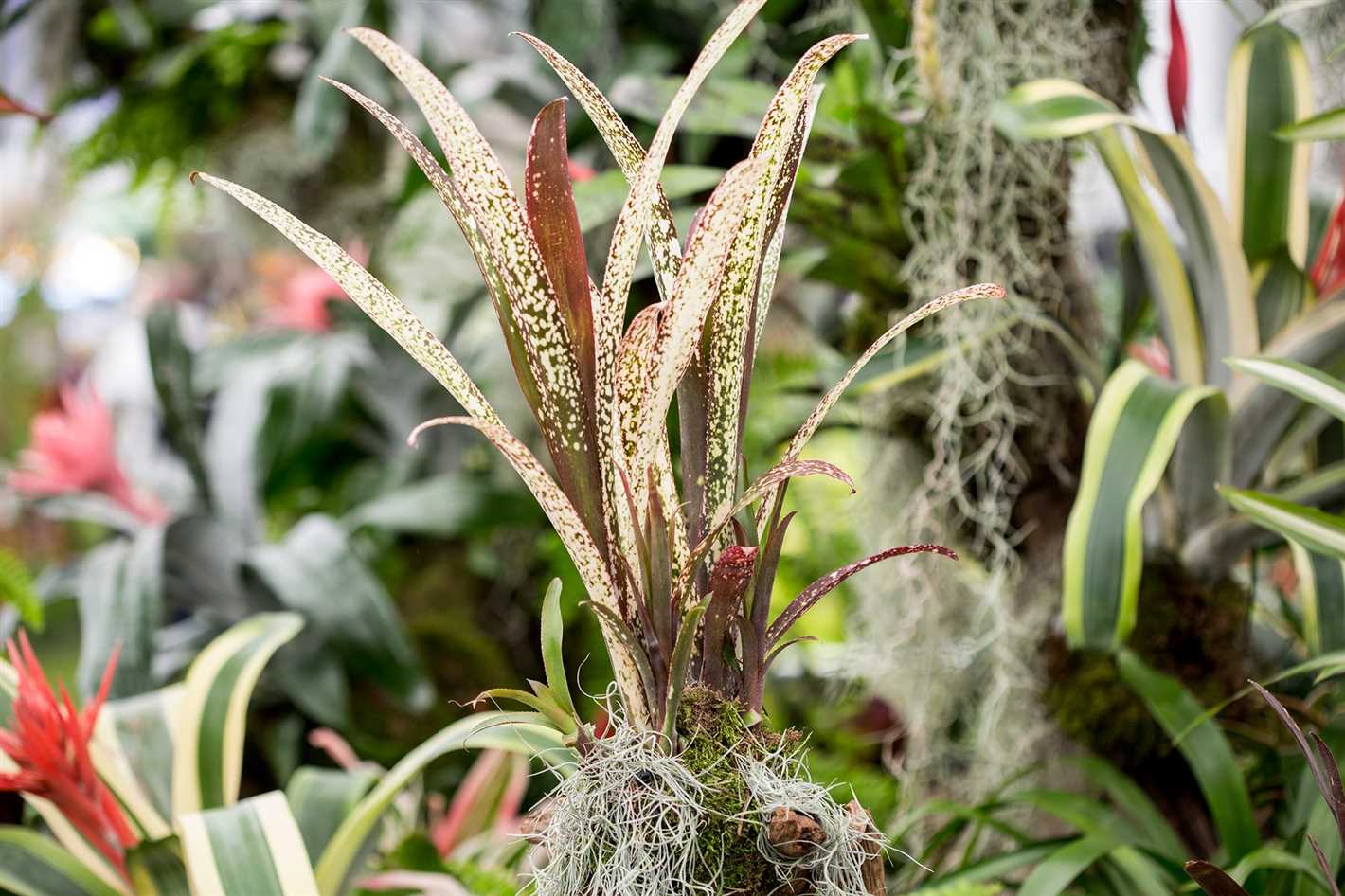
There are several popular species of Bilbergia plants, each with its unique characteristics and growing requirements. Here are a few examples:
| Species | Characteristics |
|---|---|
| Bilbergia nutans | Also known as the “Queen’s Tears,” this species has pendulous flowers with delicate pink petals. It is a prolific bloomer and relatively easy to grow. |
| Bilbergia ‘Hallelujah’ | This hybrid variety features stunning, upright inflorescences with bright red bracts and yellow flowers. It is a popular choice for its showy blooms. |
| Bilbergia ‘Tito’ | An attractive cultivar with variegated leaves that have creamy-yellow stripes. It produces orange and red flowers with yellow tips. |
By understanding the unique features and requirements of Bilbergia plants, you can enjoy their beauty and successfully grow them in your home or garden.
Selecting the Right Bilbergia Species
When it comes to selecting the right Bilbergia species for your home, there are a few factors to consider. Here are some tips to help you choose the perfect Bilbergia for your space:
Light Requirements
First and foremost, consider the light conditions in your home. Some Bilbergia species thrive in bright, indirect light, while others can tolerate lower light levels. If you have a well-lit room, you can choose a species that requires more light. On the other hand, if you have a room with limited natural light, look for a species that can adapt to lower light conditions.
Temperature and Humidity
Bilbergia plants are native to tropical regions, so they prefer warm temperatures and high humidity. Before selecting a Bilbergia species, make sure your home can provide the right temperature and humidity levels. Most species prefer temperatures between 60°F (15°C) and 80°F (27°C) and humidity levels of around 50%.
Size and Growth Habit
Bilbergia plants come in a variety of sizes and growth habits. Some species are compact, while others can grow quite tall. Consider the available space in your home and choose a species that will fit well in your desired location. Additionally, some species have a spreading or cascading growth habit, which can be ideal for hanging baskets or trailing over shelves.
Flower Color and Shape
Bilbergia plants are known for their colorful and unique flowers. Take into account the flower color and shape when selecting a species. Some species have vibrant red or pink flowers, while others have more subtle hues. The shape and size of the flowers can also vary, with some species featuring long, tubular blooms and others displaying shorter, rounder flowers.
Maintenance Requirements
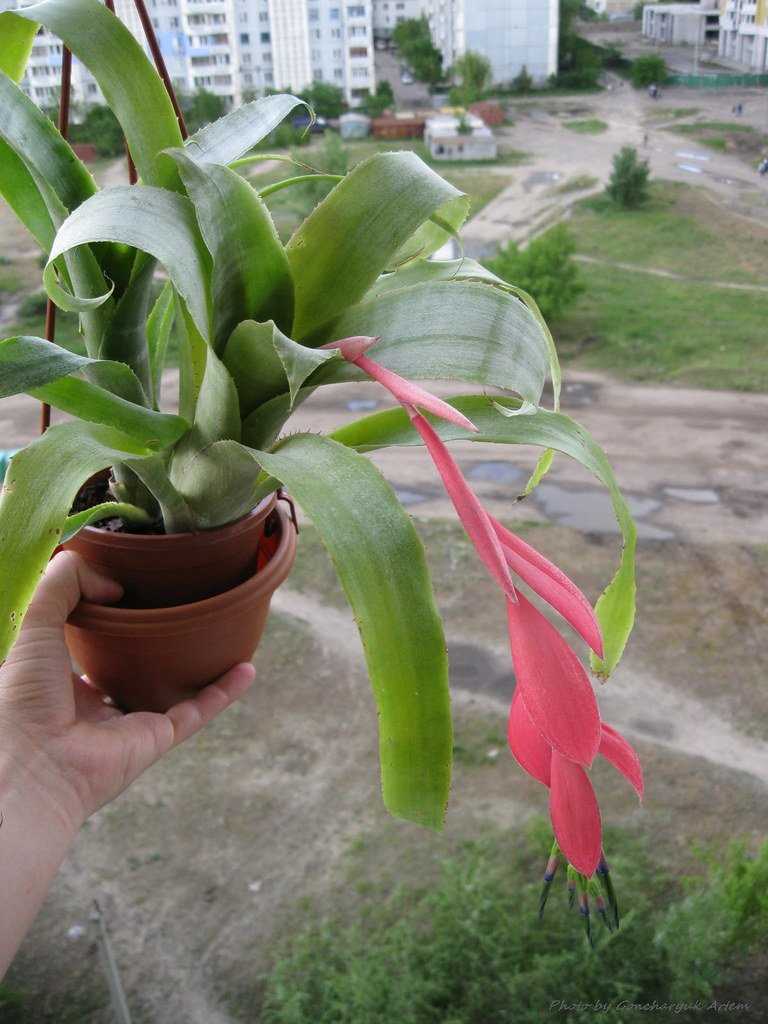
Lastly, consider your ability and willingness to care for your Bilbergia plant. Some species are more forgiving and require less maintenance, while others may need more attention. Take into account factors such as watering frequency, fertilization needs, and overall care requirements, and choose a species that aligns with your abilities and preferences.
By considering these factors, you can select the right Bilbergia species for your home and enjoy the beauty of these unique tropical plants.
Providing Adequate Lighting for Bilbergia Plants
Proper lighting is essential for the growth and health of bilbergia plants. These plants thrive in bright, indirect light conditions, similar to what you would find in their natural habitat. Here are some tips for providing adequate lighting for your bilbergia plants:
1. Indirect Sunlight
Bilbergia plants prefer bright, indirect sunlight. Direct sunlight can scorch their leaves, causing damage. Place your plants near a window with a sheer curtain to filter the light. Alternatively, you can also place them in an area where they receive bright, indirect light for a few hours in the morning or evening.
2. Avoid Excessive Shade
While bilbergia plants do best in indirect light, it’s important to avoid excessive shade. Lack of light can result in weak growth, dull foliage, and reduced flowering. Make sure to place your plants in a well-lit area where they can receive the necessary amount of light for proper growth.
3. East or West-Facing Windows
If possible, position your bilbergia plants near east or west-facing windows. These windows typically provide the right balance of light intensity and duration throughout the day. Avoid placing them near windows that face north, as these tend to provide lower light levels.
4. Supplemental Lighting
If you don’t have access to adequate natural light, you can supplement your bilbergia plants’ lighting with artificial sources. LED grow lights are ideal for providing the right spectrum and intensity of light for indoor plants. Place the lights above the plants and adjust the height as they grow to maintain an optimal distance.
5. Monitor Light Levels
It’s important to regularly monitor the light levels your bilbergia plants receive. If the foliage appears pale or starts to elongate, it may be a sign of too little light. On the other hand, if the leaves become yellow or develop brown patches, it may indicate too much direct sunlight.
By providing your bilbergia plants with adequate lighting, you can ensure they grow healthy and vibrant. Remember to strike a balance between bright, indirect light and avoiding excessive shade. With proper lighting, your bilbergia plants will thrive and reward you with their stunning blooms.
Watering and Humidity for Bilbergia Plants
Bilbergia plants require regular and consistent watering to thrive. However, it is important to strike a balance, as overwatering can lead to root rot and other diseases. Here are some tips for watering your Bilbergia plants:
1. Watering Frequency
- During the growing season, water your Bilbergia plants once a week.
- In winter, reduce watering to once every two weeks.
- Monitor the moisture level of the soil to adjust the watering frequency accordingly.
2. Watering Method
- Water your Bilbergia plants deeply, allowing the water to saturate the soil.
- Make sure to water the plant until excess water drains out from the bottom of the pot.
- Avoid waterlogging by ensuring proper drainage.
3. Water Quality
- Use lukewarm water for watering your Bilbergia plants.
- Avoid using water that is too cold, as it can shock the plant.
- If possible, use filtered water or rainwater, as Bilbergia plants prefer slightly acidic conditions.
In addition to proper watering, Bilbergia plants also require adequate humidity to thrive. Here are some tips for maintaining optimal humidity levels:
1. Natural Humidity
- Bilbergia plants are native to tropical regions and thrive in high humidity environments.
- Place your Bilbergia plant in a bathroom or near a kitchen where humidity levels tend to be higher.
2. Humidity Tray
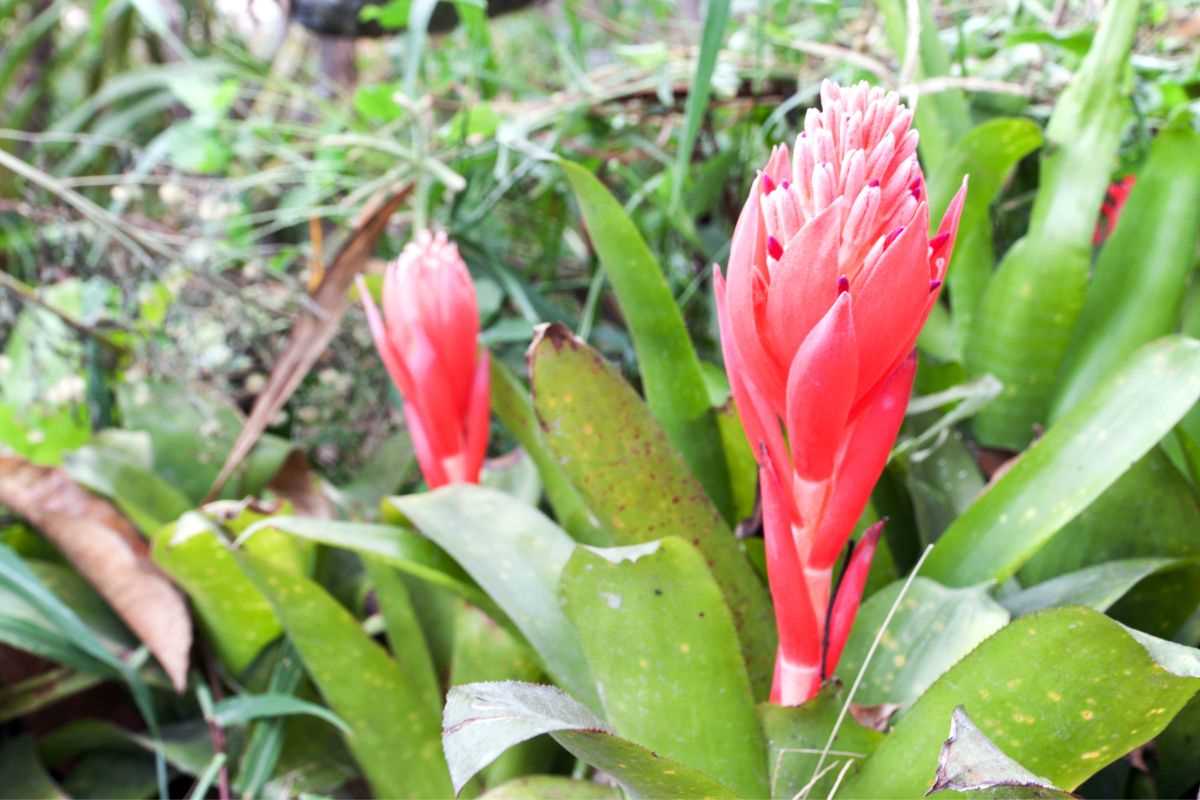
- Set up a humidity tray by placing a shallow tray filled with water near your Bilbergia plant.
- As the water evaporates, it will increase the humidity around the plant.
3. Misting
- Mist your Bilbergia plant with water regularly, especially during dry periods.
- Avoid misting directly on the blossoms to prevent damage.
By following these watering and humidity tips, you can ensure that your Bilbergia plants stay healthy and thrive in your home.
Choosing the Right Soil for Bilbergia Plants
Choosing the right soil for your Bilbergia plants is crucial for their overall health and growth. The right soil composition will ensure proper drainage, nutrient availability, and support for the roots. Here are some tips to help you choose the best soil for your Bilbergia plants:
1. Well-Draining Soil
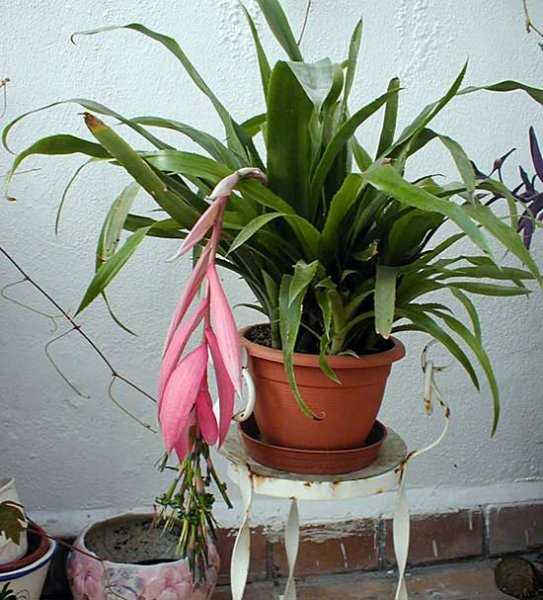
Bilbergia plants prefer a well-draining soil mix that allows water to pass through easily. Avoid using heavy, compacted soils that can lead to root rot. A mix of potting soil, perlite, and coarse sand is ideal for promoting good drainage.
2. Organic Matter
Incorporating organic matter into the soil can benefit Bilbergia plants by providing essential nutrients. Adding well-rotted compost or leaf mold to the soil mix can improve its fertility and moisture-holding capacity. Be mindful not to use too much organic matter, as it can retain too much water and lead to waterlogged soil.
3. pH Level
Bilbergia plants prefer slightly acidic to neutral soil pH levels. A pH range of 5.5 to 7.0 is suitable. Testing the soil pH can help ensure that it is within the preferred range for optimal plant growth. Adjusting the pH may be necessary by adding lime to increase alkalinity or sulfur to increase acidity.
4. Fertilizer Compatibility
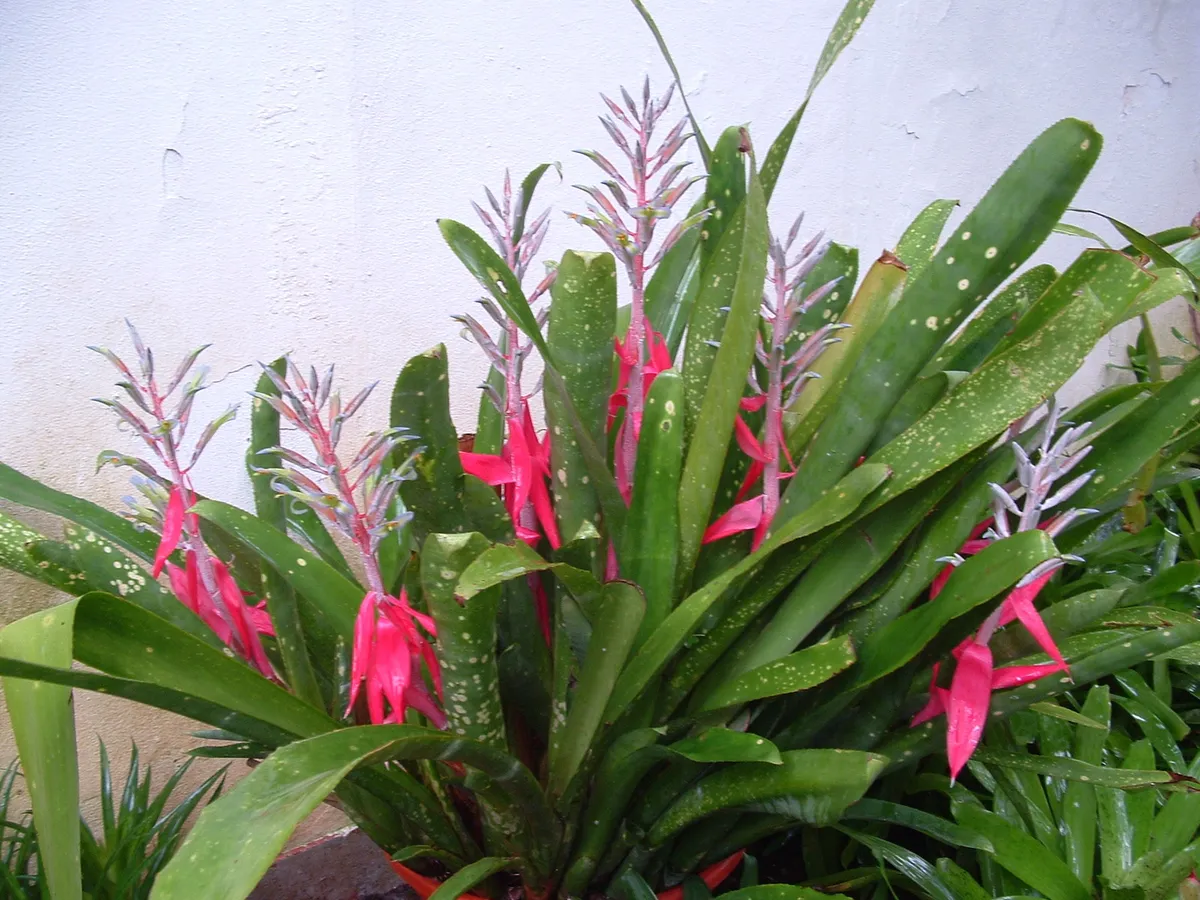
Consider the fertilizer requirements of Bilbergia plants when choosing the soil. Some fertilizers may not be compatible with certain soil mixes. It is advisable to use a well-balanced, slow-release fertilizer to provide a steady supply of nutrients without overwhelming the plant. Following the fertilizer manufacturer’s instructions is crucial to avoid over-fertilization.
5. Quality vs. Price
While it may be tempting to opt for cheaper soil mixes, investing in a high-quality soil mix is beneficial in the long run. High-quality mixes often contain a balanced blend of ingredients, ensuring optimal plant growth and health. It is worth considering the reputation of the soil brand and reading reviews before making a purchase.
By choosing the right soil for your Bilbergia plants, you can create a favorable environment for them to thrive. Remember to regularly monitor their moisture levels and adjust watering accordingly. Healthy soil is the foundation for healthy plants.
Fertilizing Bilbergia Plants
Proper fertilization is essential for the healthy growth of Bilbergia plants. Here are some tips on how to fertilize your plants:
Choose the right fertilizer
When it comes to fertilizing Bilbergia plants, it is important to choose a balanced fertilizer that is specifically formulated for bromeliads. Look for a fertilizer with an N-P-K ratio of 10-10-10 or 20-20-20. This balanced ratio provides the necessary nutrients for the plants’ growth and development.
Apply the fertilizer correctly
Follow the instructions on the fertilizer package for the exact dosage and frequency of application. Generally, it is recommended to fertilize Bilbergia plants once a month during the growing season, which is typically spring and summer.
Apply the fertilizer directly to the soil around the base of the plant. Avoid getting the fertilizer on the leaves, as this can cause burning or damage.
Water the plants properly
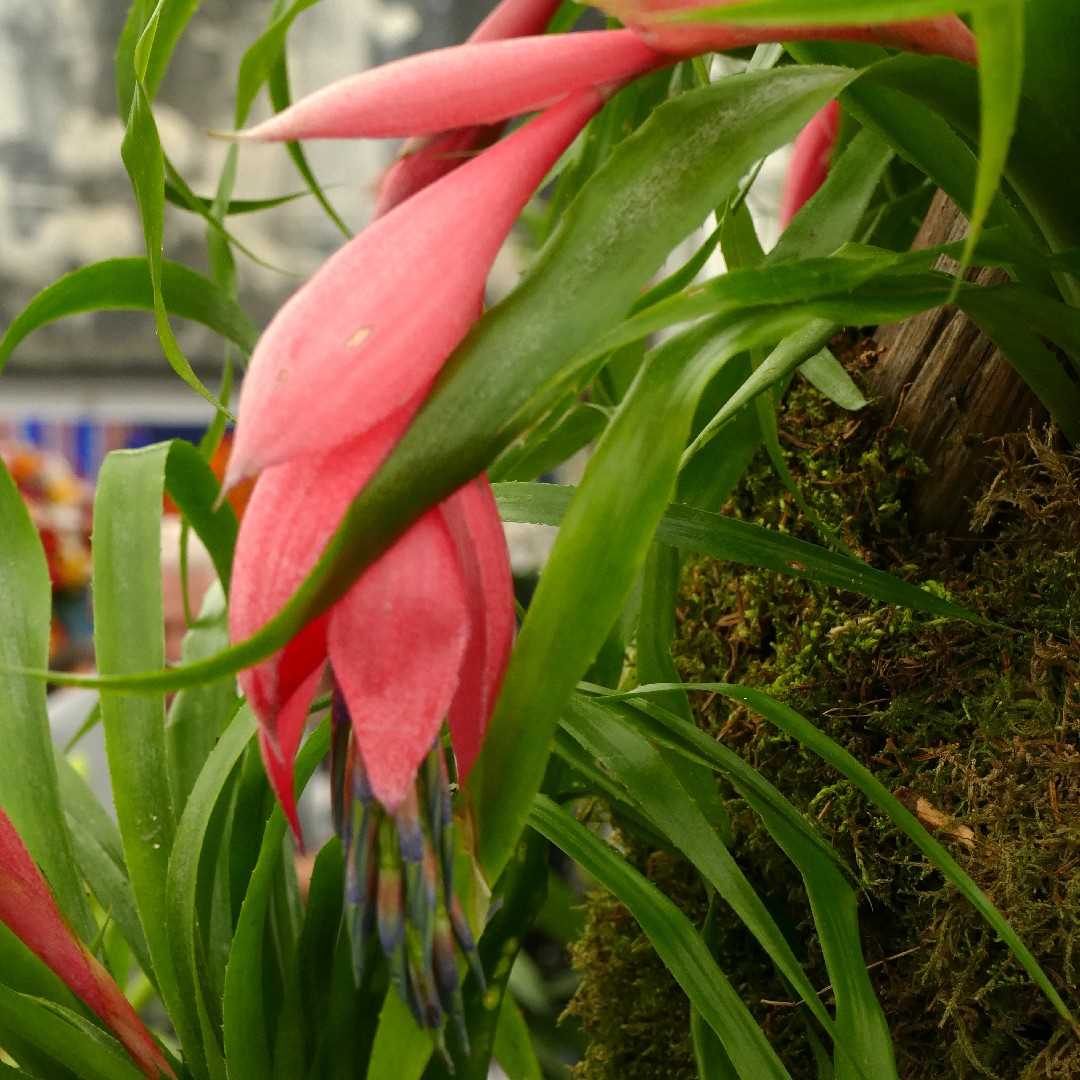
Before applying the fertilizer, make sure the soil is moist. This will help prevent fertilizer burn and ensure that the nutrients are absorbed by the plant roots.
After applying the fertilizer, water the plants thoroughly to help distribute the nutrients evenly throughout the soil.
Monitor the plants’ response
Pay attention to how your Bilbergia plants respond to the fertilizer. If the leaves start to turn brown or curl, it may be a sign of over-fertilization. In this case, flush the soil with water to leach out any excess fertilizer.
On the other hand, if the plants show signs of slow growth or pale leaves, they may need more fertilizer. Adjust the dosage or frequency of application accordingly.
Consider organic fertilizers
If you prefer to use organic fertilizers, there are options available for Bilbergia plants as well. Organic fertilizers are derived from natural sources and are less likely to cause chemical buildup in the soil. Look for organic fertilizers that are specifically formulated for bromeliads or other houseplants.
| Benefits of organic fertilizers for Bilbergia plants |
|---|
| 1. Slow-release nutrients |
| 2. Improve soil structure |
| 3. Environmentally friendly |
| 4. Less risk of fertilizer burn |
Remember, fertilizing Bilbergia plants is important, but it is equally important to avoid over-fertilization. Always follow the instructions on the fertilizer package and monitor the plants’ response to ensure their optimal health and growth.
Pruning and Propagating Bilbergia Plants
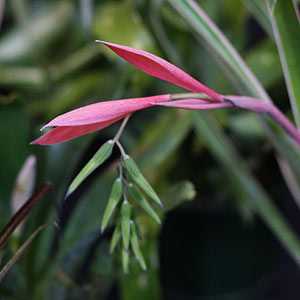
Pruning and propagating bilbergia plants is essential for their proper growth and maintenance. By removing dead leaves and offset plants, you can help ensure that your bilbergias stay healthy and vibrant. Additionally, propagating bilbergia plants allows you to expand your collection or share them with friends and family.
Pruning Bilbergia Plants
To prune your bilbergia plants, follow these simple steps:
- Identify dead or damaged leaves: Inspect your bilbergia plants regularly and identify any dead or damaged leaves. These leaves are usually discolored, wilted, or have brown spots.
- Cut the dead leaves: Use a clean, sharp pair of pruners or scissors to cut the dead leaves close to the base of the plant. Make sure to discard the cut leaves to prevent the spread of diseases.
- Remove offset plants: Bilbergia plants produce offset plants, also known as pups, which can be separated from the parent plant and grown individually. Look for mature offset plants that have their own root system and are at least one-third the size of the parent plant.
- Cut off the offset plants: Gently twist or cut off the offset plants from the parent plant using a clean, sharp tool. Make sure to retain some of the roots to improve the chances of successful propagation.
Propagating Bilbergia Plants
Propagating bilbergia plants is a great way to expand your collection or share them with others. Here are two common methods for propagating bilbergia plants:
- Offset plant propagation: Take the offset plants that you removed during pruning and plant them in their own pots. Use a well-draining potting mix, place the offset plant in the pot, and lightly pat the soil around it. Water the plant thoroughly and place it in a bright, indirect light location.
- Division: If your bilbergia plant has multiple offsets, you can divide the entire plant into smaller sections. Carefully remove the plant from its pot and separate the offsets. Each section should have its own root system and a good amount of foliage. Plant each division in its own pot with well-draining soil and water thoroughly.
Remember to keep the newly propagated plants in a warm and humid environment to encourage root growth. Mist them regularly and monitor their progress closely.
Conclusion
Pruning and propagating bilbergia plants is a simple and rewarding task that helps maintain their health and allows you to expand your collection. By following the steps outlined above, you can ensure that your bilbergias stay vibrant and thriving in your home.
Common Pests and Diseases Affecting Bilbergia Plants
While bilbergia plants are generally quite resistant to pests and diseases, there are a few common issues that can affect them. It is important to identify and address these problems early to prevent any serious damage to your plants.
Pests
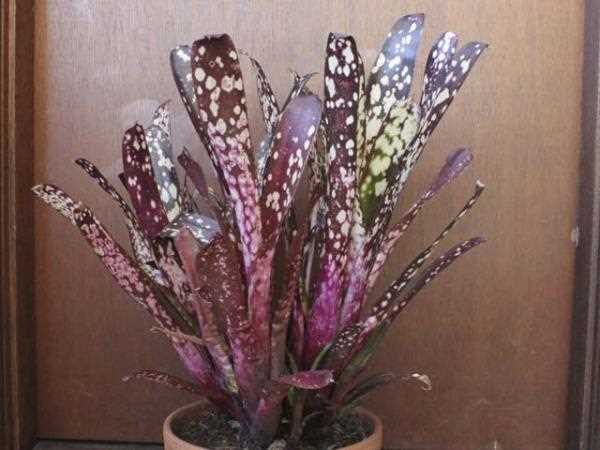
1. Aphids: These small insects suck the sap from the bilbergia plant’s leaves, causing them to wilt and yellow. If you notice sticky residue on the leaves or the presence of ants, it may be a sign of an aphid infestation. Use insecticidal soap or neem oil to eliminate them.
2. Mealybugs: Mealybugs are small, soft-bodied insects that can be found in clusters on the leaves and stems of the plant. They suck the sap, causing stunted growth and yellowing of the leaves. To get rid of mealybugs, wipe them off using a cotton swab dipped in alcohol or apply insecticidal soap.
3. Spider mites: Spider mites are tiny pests that can be identified by the fine webbing they create on the leaves of the plant. They suck the sap, causing the leaves to turn yellow and dry out. Increase humidity around the plant to discourage spider mites, and use insecticidal soap or neem oil to control them.
Diseases
1. Root rot: Overwatering or poor drainage can lead to root rot in bilbergia plants. The roots become mushy and brown, and the plant may wilt. To prevent root rot, ensure the plant is in well-draining soil and water it only when the top inch of soil is dry.
2. Fungal leaf spot: Fungal leaf spot appears as small, dark spots on the leaves. It can be caused by excessive moisture on the leaves or poor air circulation. Remove any affected leaves and ensure the plant has good airflow to prevent further infection.
3. Leaf blight: Leaf blight causes large brown or black spots on the leaves of bilbergia plants. It is often caused by high humidity and poor airflow. To prevent leaf blight, ensure the plant has good ventilation and avoid overhead watering.
4. Mildew: Mildew appears as a powdery white coating on the leaves of the plant. It thrives in humid conditions and can be controlled by improving air circulation around the plant and avoiding overwatering.
Monitoring your bilbergia plants regularly and addressing any pest or disease issues promptly will help keep them healthy and thriving.
Q&A:
How often should I water my Bilbergia plants?
Bilbergia plants prefer to be kept evenly moist, so it is important to water them regularly. Depending on the specific species and the conditions in your home, you may need to water them every 1-2 weeks.
Can Bilbergia plants tolerate direct sunlight?
No, Bilbergia plants do not tolerate direct sunlight well. They prefer bright, indirect light. Placing them near a window with a sheer curtain or in a well-lit room should provide them with the right amount of light.
How do I propagate Bilbergia plants?
Bilbergia plants can be propagated through offsets, which are small plants that grow from the base of the parent plant. To propagate, carefully remove the offset with a clean knife and plant it in a separate pot with well-draining soil. Keep the soil moist and place it in a warm, bright location.
What are some common problems that Bilbergia plants can encounter?
Some common problems that Bilbergia plants can encounter include root rot, which is caused by overwatering, and pests such as mealybugs and spider mites. To prevent these problems, make sure to water your plants properly and regularly inspect them for any signs of pests.
What are some popular species of Bilbergia plants?
Some popular species of Bilbergia plants include Bilbergia nutans, also known as the Queen’s Tears, which has beautiful pink flowers that hang down like tears. Another popular species is Bilbergia pyramidalis, which has a tall pyramid-shaped inflorescence with bright red bracts and yellow flowers.
Video:
How to Clean Artificial Plant // Easy and Simple Ways to Clean your Artificial Plants







